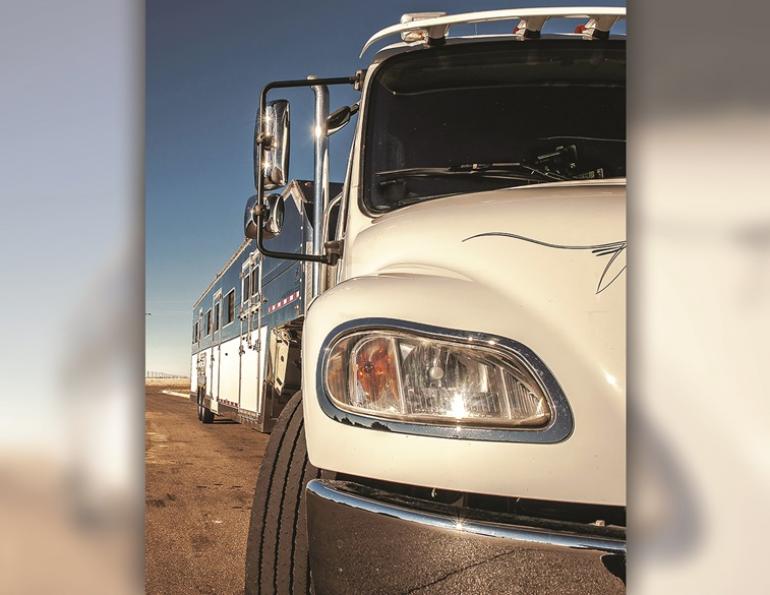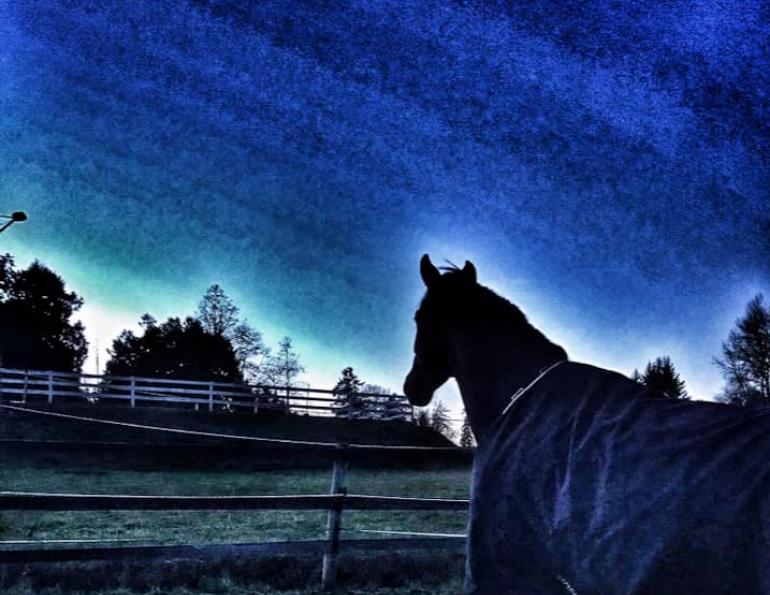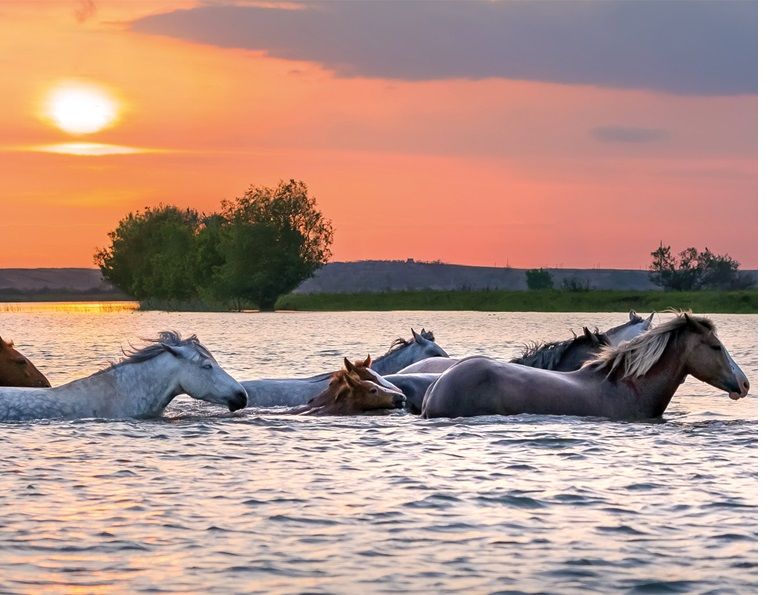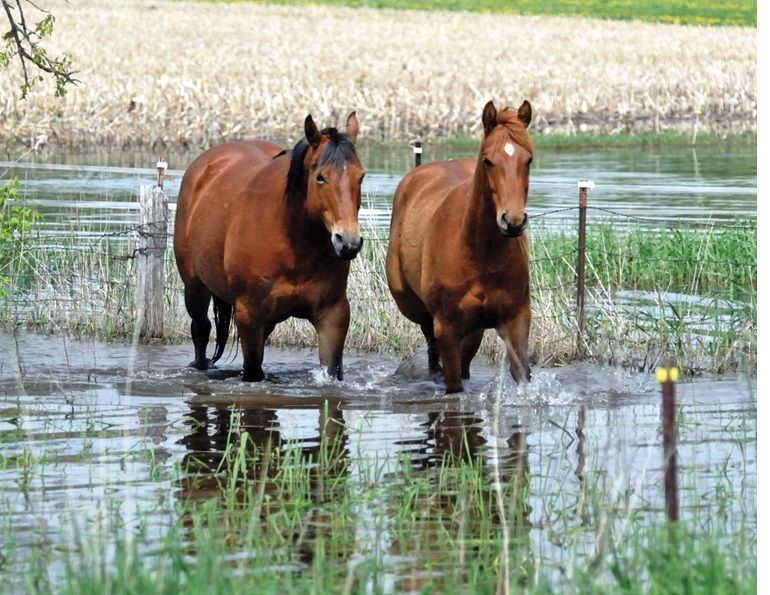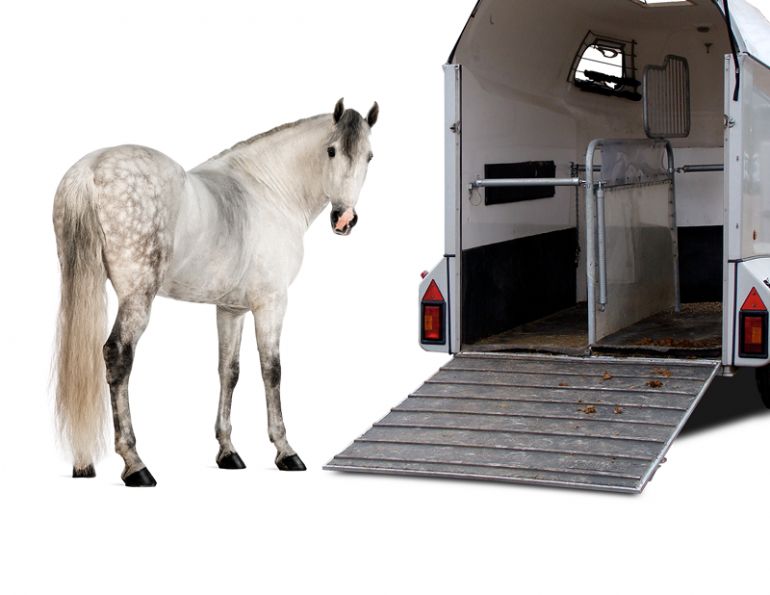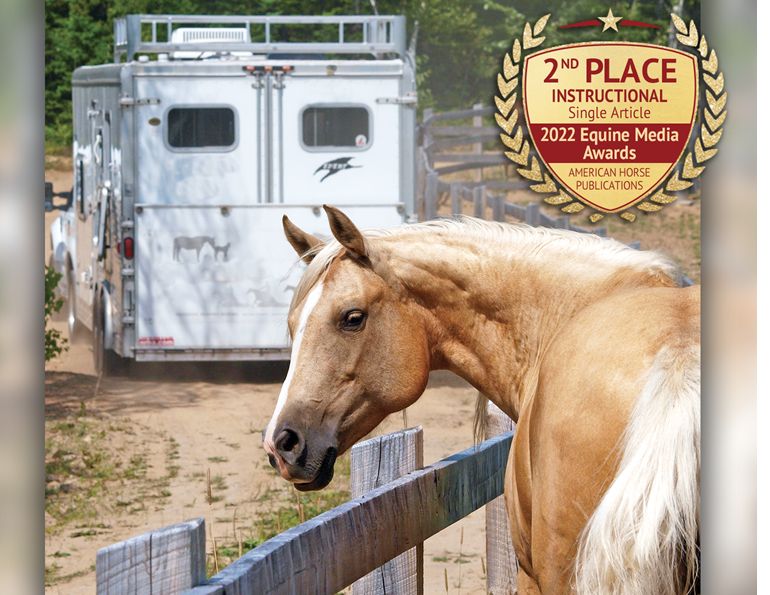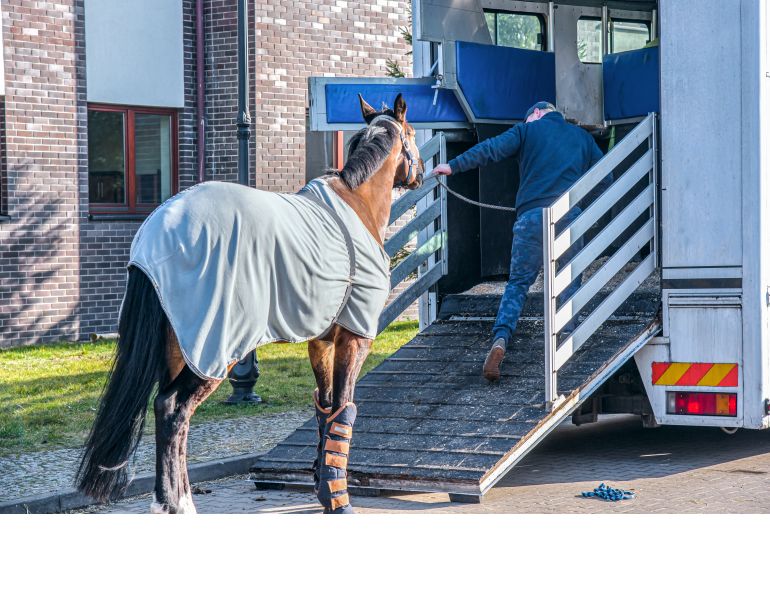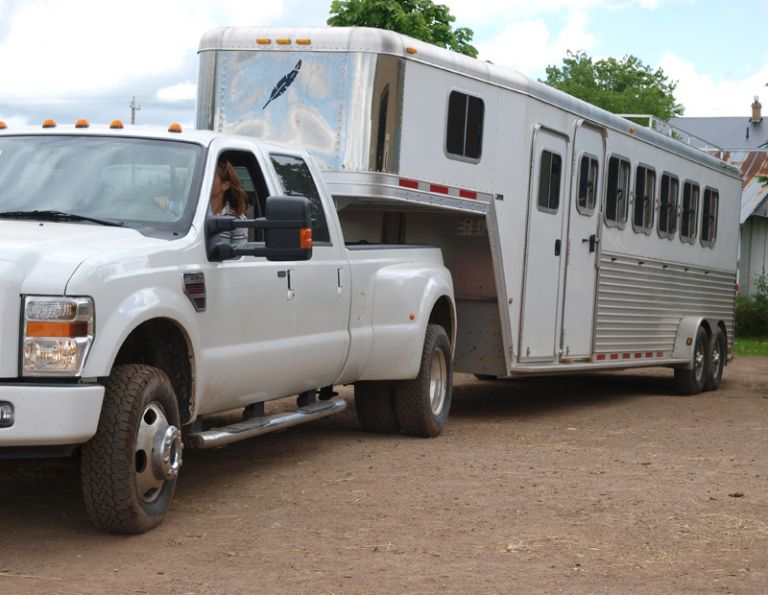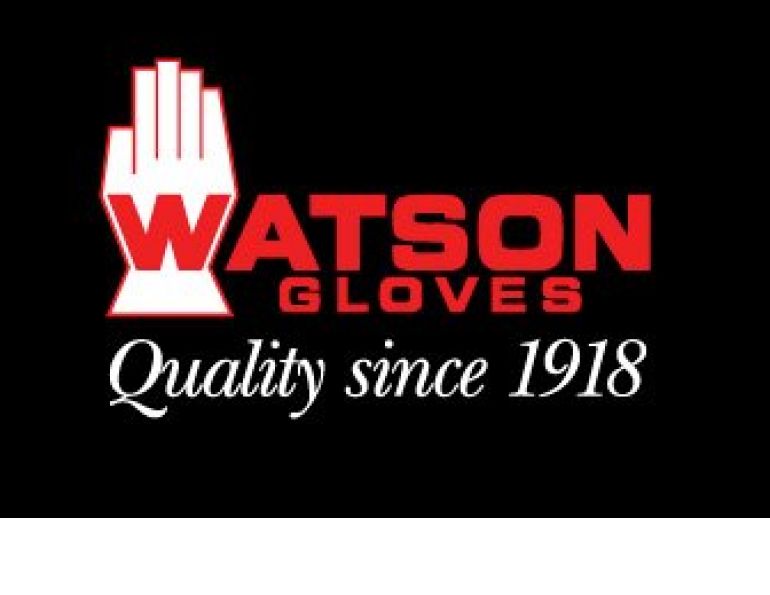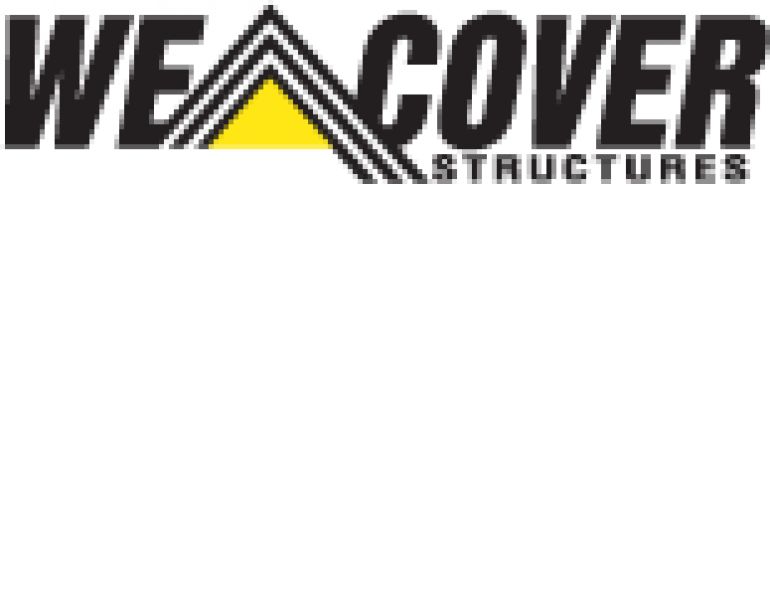Horse Transport - The Good, The Bad, and The Ugly
By Kevan Garecki
Of the various forms of commercial transport, one of the most demanding is arguably that of horse transport. Strangely, it also attracts the least qualified, the most poorly equipped, and the most fraudulent and dishonest operators. How does one wade through the ethical minefield created by illegitimate wannabes and scammers? I will offer a handful of tips to keep you and your horses safe...
To properly equip, license, and insure a commercial rig takes far more than just money, although plenty of that does evaporate quickly. Rigs are seldom “off the shelf” ready, so trucks need to be properly spec’d (upgraded to required specifications) with components to make towing their principal function. Rather than consumer grade, trailers must be either custom or commercial specialty units, both of which will have the design and accessories built in that genuine commercial transporters insist upon. These include onboard cameras, provisions for horses to have free access to water and hay (for longer runs), plenty of headroom, good ventilation, and easy reconfiguration via movable dividers, to name a few. A properly spec’d out Class 3 (a one- to three-ton truck towing a four- to six-horse trailer combination) will typically cost upwards of $200,000. And that’s not a typo: it’s $120,000 for a properly equipped truck, and at least another $75,000-80,000 for a commercial grade trailer. Step up to a Class 8 rig (semi-trailer) and that figure almost triples by the time it’s on the road and actually producing revenue. These figures may offer a bit of insight into rates — it’s not easy paying those rigs off!
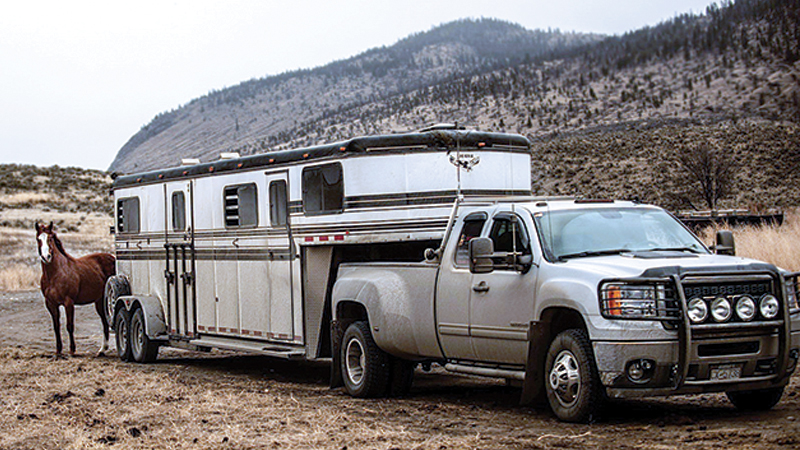
Photo: Imagery by ManeFrame
Equipment Tips
Clean and shiny means proud. It’s not always possible to keep a rig clean, especially in the winter, but responsible carriers are proud of their equipment and show it.
Trailer configuration should say “professional.” The pros know what works and why, and they also know what horses need to travel in the least stressful environment. By far the least stressful accommodation for the horse is to be transported loose in a full box stall, which allows free movement. The next best option is what’s referred to as a stall-and-a-half or “California stall,” essentially a standing stall that provides ample room for the horse to shift weight without coming into contact with a wall or divider. The smallest space is a single standing stall, which as its name implies, provides the horse with only enough room to stand in one spot.
Stall size becomes critical when longer distances are involved. The longer the trip, the more space that horse should have. Standing stalls may be acceptable for trips that can be completed in a single day, or when the horse will be unloaded every night for layover in a barn. But considering that horses are claustrophobic by nature, the smaller the space we cram them into, the more stress they’re going to experience. Stress is cumulative and produces genuine health issues. I don’t have standing stalls in my trailers; full box stalls are my sole offering because I want to make sure every horse that steps onto my trailer wants to get back on another time.
Personally, I don’t believe in angle-haul or slant-load trailers; essentially, these units are designed to put the most horses into the shortest trailer possible. In other words, angle-hauls are designed for people, not for horses. True professionals do not use them because they understand the deficits in their design. The design itself predicts that eventually one or more horses will have to be unloaded and/or reloaded to accommodate other horses. This increases the stress on the horses and shrinks an already narrow safety margin. The other downside to angle-hauls is the position horses are placed in, causing them to over-use their right fore and left hind legs for balance. This is not a big deal for short hops, but for longer trips it’s enough to invite potential complications, particularly in performance horses. Numerous studies have shown significantly extended recovery times in horses transported in angle-hauls versus those carried in box stalls or in standing stalls that face directly into or away from the direction of travel.
Related: How to Load a Horse Into a Trailer
Licensing Tips

Commercial haulers have made a huge investment in their equipment, licenses, and insurance. They know what works, and what horses need to travel in the least stressful environment. Their commitment to providing quality, competent service is reflected in their rates. Photo: Imagery by ManeFrame
Proper licensing is crucial to every commercial carrier; without it neither the rig nor the horses it carries will be covered by insurance, and others in the ownership chain (such as dealerships in the case of a leased vehicle) will not be protected in the event of damages.
The truck must be commercially licensed. Hint: the registration decal will be on the FRONT plate, not the back plate.
The trailer must be commercially licensed, and bear a full-size commercial plate, NOT the smaller utility trailer plate.
Both truck and trailer will bear a valid inspection sticker. Trailers will often display it at or near the right front, trucks will display it somewhere on the right windshield or possibly on the righthand door or window.
Insurance Tips
Insurance is often confusing for some, but here’s a simple breakdown. It’s important to be aware that insurance coverage protects the carrier, not you. Understand that while there are lawful minimums required of commercial carriers, responsible carriers know those minimums are pathetically inadequate. The law states every commercial carrier must hold at least $32,000 in cargo insurance coverage. Cargo policies only pay out in the event of an upset or loss of load; they do not pay for injuries, and do not cover your horse during a layover or while loading or unloading. Most important, cargo doesn’t cover live animals. A cargo policy would only pay out if an animal died in transit, and then only to a maximum of $2.12 a kilo! If someone boasts about having cargo insurance, they’ve just admitted they don’t have enough coverage. Every responsible horse transporter will hold a Commercial General Liability (CGL) policy that specifically speaks to horses and the environments and issues that accompany them. This coverage is summarized in what’s known as a binder, a document that outlines the type(s) of coverage the carrier has in place. You are entitled to see this document before your horse loads on their trailer. Most carriers will have versions with identifying information removed or blacked out, and they will share this with you. The CGL will at the very least have a maximum coverage amount per instance, a “per horse” ceiling, and what’s called an umbrella, which is an aggregate coverage if an incident involves several aspects, animals, or other convoluted situations.
If the carrier refuses to share their binder with you, walk away. That’s all you’re legally allowed to see, but it’s enough to distinguish a reputable carrier from an illegitimate hauler.
The above guidelines are often sufficient to protect most of us, but what about situations where we don’t have a chance to get that far? In an increasingly common scenario, a “hauler” connects with someone who needs their horse moved, claims to be able to fulfill that need, and requires a deposit to be paid up front. This is NOT an accepted practice among reputable carriers! If someone wants money up front, walk away.
Related: Questions to Ask a Commercial Transporter
Registration and Operating Authority Tips
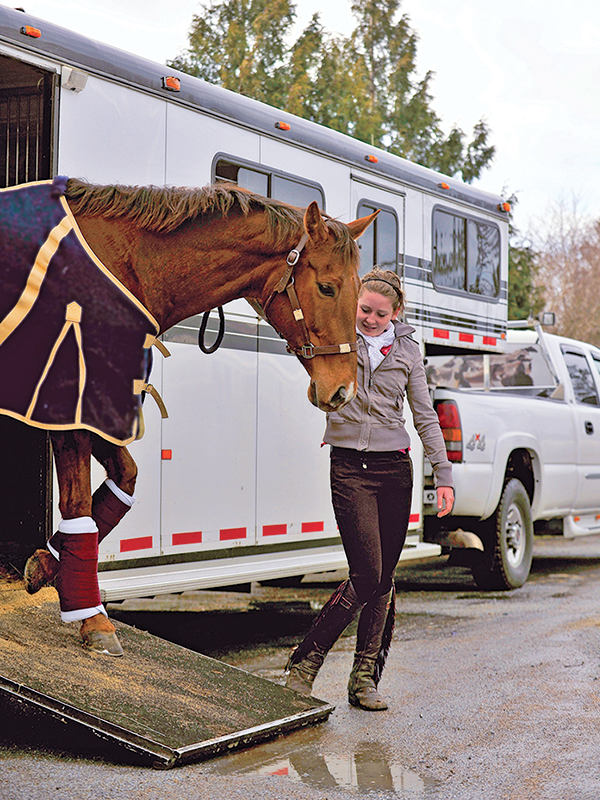
If you need your horse moved but are not familiar with a commercial carrier, spend time doing the research needed to find a reputable operator. Photo: Imagery by ManeFrame
All commercial carriers in Canada and the United States are required to be registered as such with their own country of origin.
In Canada this starts by registering with the National Safety Council and receiving their designation, which is known as an NSC number. All carriers are monitored and tracked by this number; every time one of their vehicles or drivers is involved in any sort of inspection or enforcement, that action is recorded under their NSC number. If a carrier accumulates too many infractions or other notices, they may be put under intensive review, or even have their authority to operate suspended or cancelled. Unfortunately, there is no current procedure to verify the standing of a carrier within the NSC structure; I sincerely hope this will change in the near future.
In the US, things are considerably more consumer friendly. All US-based carriers, and every Canadian carrier operating into and out of the US must be registered with the US Department of Transportation (DoT); this application will produce DoT and Motor Carrier Commission (MCC) numbers. The US is light-years ahead of us in tracking and relaying information and status of their carrier lists. It is possible to search carriers by their registered business name, doing business as (dba) name, and/or DoT or MCC numbers. A successful search will reveal the carrier’s current status (valid, on hold, revoked, etc.) and even a score based on their performance; this is a bit harder to decipher, but essentially the lower the score, the better the carrier’s safety record.
Canadian carriers will have an NSC number; US carriers and Canadian carriers operating in the US will have US DoT and MCC numbers. They will gladly share these with you. If they don’t, walk away!
Combined Insurance/Licensing/Authority Caveat
If a truck, trailer, or driver are not all properly licensed for the type of transport they are involved in, whatever insurance is in place will be null and void in the event of an accident. This even applies to a transport rider you may have in place on your own horse as is often required in cases of exceptional value, or if the value of your horse exceeds the per-horse limit of the carrier’s CGL.
If a carrier is not registered as such with their relevant base countries, all insurance is null and void in the event of an accident.
If the inspection decal(s) on either the truck or trailer are not valid, those vehicles can be detained or even impounded by a CVSE (Commercial Vehicle Safety Enforcement) or a police officer. This also negates the current validity of the vehicle’s insurance coverage, which is why an officer cannot legally allow that vehicle to proceed.
One last caveat... the most disturbing attempt at deception comes in the form of a seemingly clever scammer who copies another carrier’s profile or public identity as their own. At present, this appears to be more common in the US than in Canada, but I believe it’s only a matter of time before that will change. How does one defend against this level of criminal activity? Do your homework.
Homework Tips
If you’re not familiar with a carrier, try to find someone who knows them. Reputable carriers got that way by providing substantial levels of service, and that leaves a trail. It shouldn’t be difficult to find out who’s done a good job.
Do your own search, too. An online search for a reputable carrier should provide a number of hits leading to websites, social media pages, client referrals, and more. Some smaller carriers are often better researched by the proprietor’s name, so it may be necessary to search more than once to gather your information.
Birds of a feather flock together — the good guys often work with other good guys. If you’re not having any luck sourcing intel on a carrier, ring up a known major carrier and ask them. They are often the best source of industry intel, but understandably they will seldom cast aspersions on others so the best you might glean is a no comment. That’s enough for me, because if I know and vouch for a carrier, I’m proud to say their name; if I won’t recommend them, I’ll refer back to my go-to list instead.
One benefit of social media is the appearance of pages and accounts specifically focused on carrier performance and recommendations. These are often sources of current reviews about carriers, but they must also be taken with that proverbial grain of salt. Social media presents an overabundance of opinion versus fact, so instead of focusing on individual posts, look for trends. It should be easier to find good reports and reviews than to find bad ones. I would also be suspect of a carrier about whom I was not able to find any reviews, as this denotes a lack of experience and longevity in the business.
Rate Tips
My last provision is about rates. Reputable carriers know what they need to provide competent service; they also understand what that level of commitment costs them and how that translates to rate structures. One of the most common ploys used by lesser experienced and unqualified haulers is to simply offer cheap rates in an effort to fill their trailers. The old saying, Quality doesn’t cost, it pays was never truer than here. All the good carriers know this, and it doesn’t take much more than a few phone calls or emails to realize that the prices charged by the good guys are going to be comparable. The disparities come when the newbies, frauds, and scammers get involved. Their rates will vary widely from each other and from those of quality carriers. I strongly urge anyone seeking transport to gather as many quotes as possible and compare them carefully. Quotes that fall far out of the norm are almost always either from fly-by-night outfits and illegitimate haulers or indicate a potential scam. While rate alone is not conclusive, it should at least combine with other attributes to give an overall view of prospective carriers.
If a rate is too good to be true, it’s too good to be true.
Cheap isn’t always a deal. You may save a few bucks on a cheap haul, but your horse will pay the ultimate price.
While the preceding information is not guaranteed to help you determine a carrier’s fitness to provide suitable service, it can at least reduce your likelihood of falling prey to fraudulent or disreputable haulers. Practice due diligence, be thorough in your investigation of unknown providers, and make informed decisions.
Related: Buying a Pre-owned Horse Trailer
Related: How to Haul a Horse Safely
.
Main Photo: Imagery by ManeFrame



